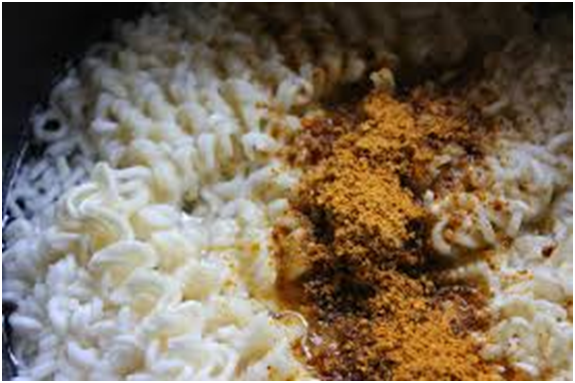Think Before You Chew, Maggi And After
Lead et al

Amidst the recent controversy over the sale of Maggi, a Nestle-marketed product in India, my thoughts haven’t ventured far from that of food in the last week. Nutrition and intake of good quality has made me who I am today, or at least the flesh and bones part of me.
It was not a surprise that Maggi would be recalled for the nature of Maggi noodles is junk food, plain and simple. No matter how it is marketed –“Whole Grain Atta Noodles” and what not – it is still junk food through and through. In fact, such a marketing mechanism could be making use of the fortification mechanism but one must note that apart from carrying out fortification in a correct, scientific manner so that there is no findings of lead in food samples, as in the case of testing of Maggi samples, “supplementation and fortification address symptoms; the root causes of the problems must still be addressed” (Nordin, S. M., Boyle, M., and Kemmer, 2013: 591), which will be discussed later on.
This is because my definition of junk food, which may be quite narrow-minded, is one that is based on the nature of the manufacturing process – if it is processed and if it consists of any degree of natural vegetables. In fact, a packet of Maggi noodles does not follow these criteria. However, with lead having been found in Maggi and that too above acceptable standards makes it all so much worse. The ban on Maggi should also be looked at in the light of the possibility of a junk food ban in schools that is being considered in India. In fact, the ban on Maggi puts into perspective a whole range of food-related concerns that Indian society as a whole must ponder over.
The Times of India, dated 3 June 2015, ran an article that showed that the protein intake was low, more specifically, nine out of ten Indians consumed less than adequate proteins daily and that 91 % of vegetarians and 85 % of non-vegetarians were deficient in protein. This clearly highlights that there is a malnutrition problem. One should not jump to make inferences with regard to the associations between a low protein intake and other health problems that also affect India’s population, namely the fact that an increasing percentage of the population suffer from adult-onset Diabetes or Type 2 diabetes.
Moreover, coming back to the lamentation that there is no proper health care system in India and many simply join the workforce so that they can fend for themselves in terms of health care, post retirement, the issue of malnutrition needs to be acknowledged. It is all right to associate malnutrition with poverty but malnutrition if the definition is to be taken literally is the wrong intake of food in such a manner that there is lack of alignment between what the body needs and what the body is receiving. For example, literature states that “monotonous diets consisting of a limited number of staple foods often lead to deficiencies in one or more micronutrients” (Miller and Welch, 2013: 18). So whilst, it may be all right to eat chapattis for all your meals, there is range of other types of grains that too should form part of a regular, balanced diet. In fact, let one consider the global picture for a moment – 30 per cent of the world’s population, which I shall consider as 7 billion for now, lacks micronutrients, as cited by Nordin, Boyle and Kemmer (2013).
There should also be an understanding that whilst people make sure that ends meet, and that food is accessible to households, food security concerns are kept at bay. As Nordin, Boyle and Kemmer (2013) show when referring to a diagram between Food Security and Nutrition Security, food security “refers to the area of causes and effects of food availability at the household level (eg, access to food) and utilization (eg, caring capacity), which India as a whole is striving to maintain.
For example, India ensures that there is food distribution for those identifying themselves as being below poverty line (BPL). Furthermore, the Mid-Day Meal Scheme, which ensures that schools provide access to food for students. To consider an example on food security in depth, when visiting the Government of Arunachal Pradesh’s Department of Food and Civil Supplies, in collaboration with the Government of India, there are a number of food distribution schemes, which all show that food security concerns are being met.
However, nutrition Security concerns are still being faced across the board, as the recent article on intake of protein highlights. One way to ensure nutrition security is to ensure collaboration across stakeholders, more specifically, the involvement of “sector policies and programs such as health, agriculture, food security, education, gender equality, environment, habitat, water, sanitation, and energy” (Nordin, Boyle and Kemmer, 2013: 590). That just may be some food for thought.
****
References
Miller, D. D., and Welch, R. M. 2013. Food system strategies for preventing micronutrient malnutrition. Food Policy, 42: 115-128.
Nordin, S. M., Boyle, M., and Kemmer, T. M. 2013. Position of the Academy of Nutrition and Dietetics: Nutrition Security in Developing Nations: Sustainable Food, Water, and Health. Journal of the Academy of Nutrition and Dietetics, 113(4): 581-595.



